Reporting 2020
CGTN Europe's correspondents look back on an unprecedented year
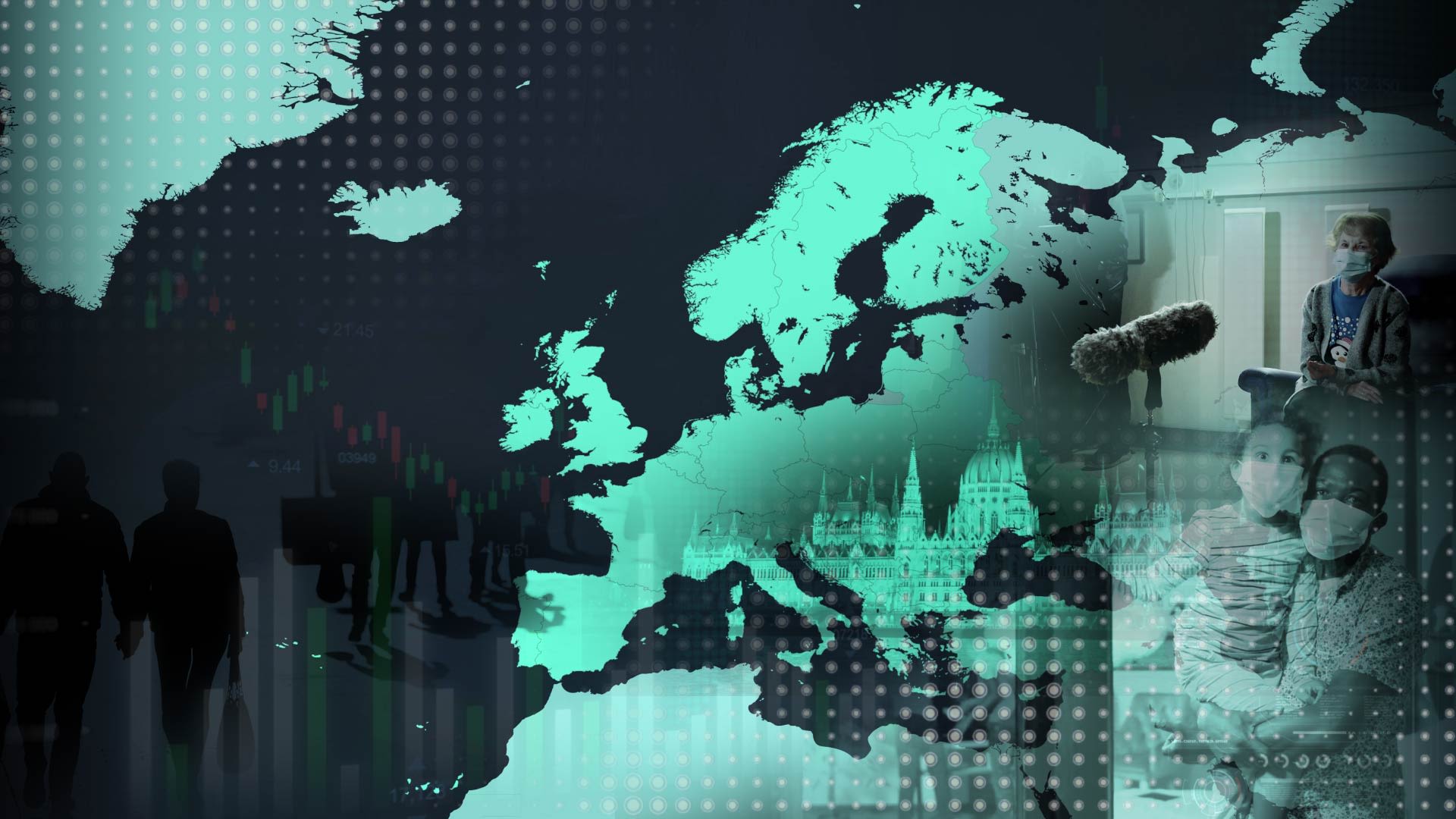
Some years ring out through European history: 1346 for the Black Death, 1648 for the end of the Thirty Years' War, 1848 for revolutions across Europe, 1945 for the end of World War II, 1992 for the Maastricht Treaty.
Now, 2020 can be added to the list for the coming of a new plague: a coronavirus which has killed millions and affected billions.
It has certainly not been a quiet first full year for the correspondents of CGTN Europe, dispersed around a continent which has struggled to comprehend, let alone combat, the scale of COVID-19.
Below, our reporters on the ground around Europe look back on 2020, reflecting on the pandemic's effect where they are – and picking out one other major story each from their location.
But first, here's a reminder of the year that we will never forget – for better or worse.
Belgium:
Toni Waterman

COVID-19 in Belgium
I arrived in Belgium to start my new gig as CGTN's Brussels correspondent only weeks before the coronavirus came to town – or rather, mercilessly busted down the door. Belgium hasn't merely been hit by the coronavirus, it's been pummeled by it.
For long stretches during this pandemic, the country has had one of the highest infection and death rates not just in Europe, but the world. During the first wave, my inbox was flooded with messages from nervous family and friends, often with news articles attached sensationalizing Belgium's plight. "Is this true?" "Why is it so high?" "Please come home."
It was a phenomenon that captured global attention. How was it that a developed nation like Belgium, the seat of European power, could be so badly hit? The reality was far less mysterious. From the beginning, Belgium counted deaths much more thoroughly than other countries, including people who died in the hospital, at home, and in nursing homes. They even counted suspected cases – people who were never tested but likely died from COVID-19. Parts of Belgium are also densely populated, especially the capital region of Brussels, providing an easy opportunity for the virus to spread. The transient nature of the city also didn't help.
READ MORE November 6: A game of human chess to stop Belgium's hospital system collapsing
The second wave was far worse than the first. Within weeks of the resurgence, infections and hospitalizations easily eclipsed the peaks of the spring-time wave. The country's ICU wards were overwhelmed. To keep the system from collapse, patients were transfered across the border to Germany for treatment, and health staff that tested positive for the virus but were showing no symptoms were asked to keep working.
Things have since quietened down. A harsh second lockdown took effect on November 1 and is slated to last well into 2021. But even with strict measures in place, the number of new daily infections has struggled to drop below 2,000 – the government wants it around 800. So the status quo is likely to remain until mass vaccination can take place.
Green Transition
The coronavirus undoubtedly dominated headlines, attention and resources in 2020, but it wasn't the only important story on the radar. There was – and still is – Brexit, but that has been a rather dark and gloomy affair. So let's focus on the other big non-COVID-19 story of the year: Europe's green transition.
Believing that no good crisis should go to waste, Brussels earmarked 30 percent of its $2.2 trillion coronavirus recovery fund and long-term budget for green projects.
"Next Generation EU can lead to the most ambitious overhaul of the European economy in decades. It will drive our green and jobs recovery, it will be investing in everything from renewables to renovations to restoring our nature," European Commission President Ursula von der Leyen proudly told parliament before the Christmas break.
READ MORE October 15: EU's huge green renovation plan evokes Bauhaus beauty and utility
At the heart of the European Green Deal is the very ambitious goal of becoming climate-neutral by 2050. It's a far more aggressive target than many other countries have adopted. Most are aiming to be only carbon-neutral in that timeframe.
Europe cleared a major hurdle to reach that goal in the final weeks of the year. Leaders agreed to toughen the bloc's 2030 greenhouse gas emissions reduction target from 40 percent to 55 percent compared to 1990 levels. The switch from coal to clean energy will be harder for some member states than others. Poland, for example, gets 80 percent of its power from dirty coal-fired power plants. Hungary will also face challenges, but money from the budget and recovery fund will help offset the short-term economic pain.
Brussels really sees a green transition as its golden ticket to the future – a future in which European economies are more competitive, jobs are plentiful and Europe is the global leader in tackling climate change.
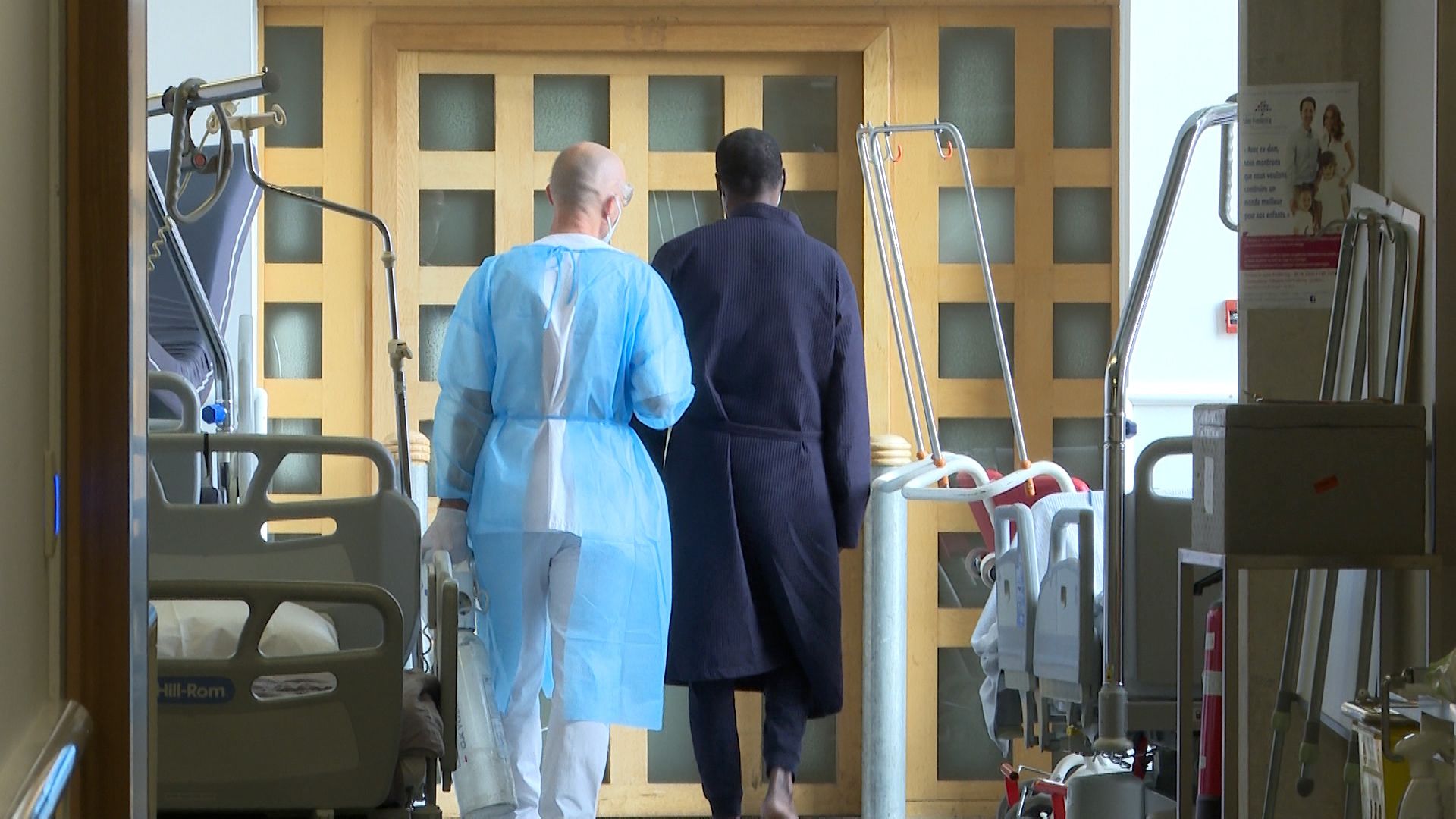
A COVID-19 patient gets some exercise at CHU Liege. /CGTN
A COVID-19 patient gets some exercise at CHU Liege. /CGTN
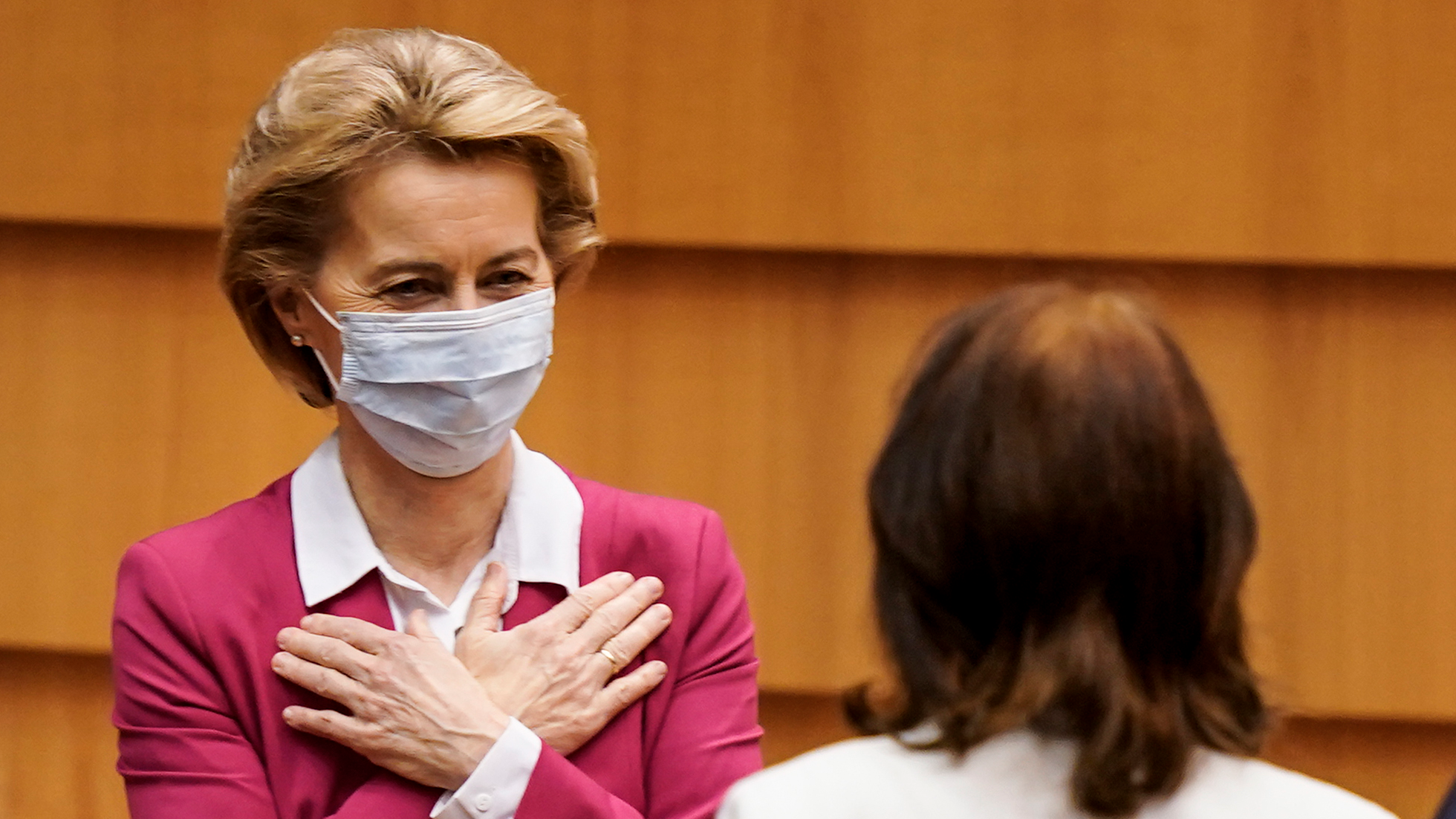
Ursula von der Leyen unveiled the bold plan which could change the look of Europe. /Kenzo Tribouillard/AFP
Ursula von der Leyen unveiled the bold plan which could change the look of Europe. /Kenzo Tribouillard/AFP
COVID-19 in Belgium
I arrived in Belgium to start my new gig as CGTN's Brussels correspondent only weeks before the coronavirus came to town – or rather, mercilessly busted down the door. Belgium hasn't merely been hit by the coronavirus, it's been pummeled by it.
For long stretches during this pandemic, the country has had one of the highest infection and death rates not just in Europe, but the world. During the first wave, my inbox was flooded with messages from nervous family and friends, often with news articles attached sensationalizing Belgium's plight. "Is this true?" "Why is it so high?" "Please come home."
It was a phenomenon that captured global attention. How was it that a developed nation like Belgium, the seat of European power, could be so badly hit? The reality was far less mysterious. From the beginning, Belgium counted deaths much more thoroughly than other countries, including people who died in the hospital, at home, and in nursing homes.

A COVID-19 patient gets some exercise at CHU Liege. /CGTN
A COVID-19 patient gets some exercise at CHU Liege. /CGTN
They even counted suspected cases – people who were never tested but likely died from COVID-19. Parts of Belgium are also densely populated, especially the capital region of Brussels, providing an easy opportunity for the virus to spread. The transient nature of the city also didn't help.
READ MORE November 6: A game of human chess to stop Belgium's hospital system collapsing
The second wave was far worse than the first. Within weeks of the resurgence, infections and hospitalizations easily eclipsed the peaks of the spring-time wave. The country's ICU wards were overwhelmed. To keep the system from collapse, patients were transfered across the border to Germany for treatment, and health staff that tested positive for the virus but were showing no symptoms were asked to keep working.
Things have since quietened down. A harsh second lockdown took effect on November 1 and is slated to last well into 2021. But even with strict measures in place, the number of new daily infections has struggled to drop below 2,000 – the government wants it around 800. So the status quo is likely to remain until mass vaccination can take place.
Green Transition
The coronavirus undoubtedly dominated headlines, attention and resources in 2020, but it wasn't the only important story on the radar. There was – and still is – Brexit, but that has been a rather dark and gloomy affair. So let's focus on the other big non-COVID-19 story of the year: Europe's green transition.
Believing that no good crisis should go to waste, Brussels earmarked 30 percent of its $2.2 trillion coronavirus recovery fund and long-term budget for green projects.

Ursula von der Leyen unveiled the bold plan which could change the look of Europe. /Kenzo Tribouillard/AFP
Ursula von der Leyen unveiled the bold plan which could change the look of Europe. /Kenzo Tribouillard/AFP
"Next Generation EU can lead to the most ambitious overhaul of the European economy in decades. It will drive our green and jobs recovery, it will be investing in everything from renewables to renovations to restoring our nature," European Commission President Ursula von der Leyen proudly told parliament before the Christmas break.
At the heart of the European Green Deal is the very ambitious goal of becoming climate-neutral by 2050. It's a far more aggressive target than many other countries have adopted. Most are aiming to be only carbon-neutral in that timeframe.
READ MORE October 15: EU's huge green renovation plan evokes Bauhaus beauty and utility
Europe cleared a major hurdle to reach that goal in the final weeks of the year. Leaders agreed to toughen the bloc's 2030 greenhouse gas emissions reduction target from 40 percent to 55 percent compared to 1990 levels. The switch from coal to clean energy will be harder for some member states than others. Poland, for example, gets 80 percent of its power from dirty coal-fired power plants. Hungary will also face challenges, but money from the budget and recovery fund will help offset the short-term economic pain.
Brussels really sees a green transition as its golden ticket to the future – a future in which European economies are more competitive, jobs are plentiful and Europe is the global leader in tackling climate change.
France:
Ross Cullen

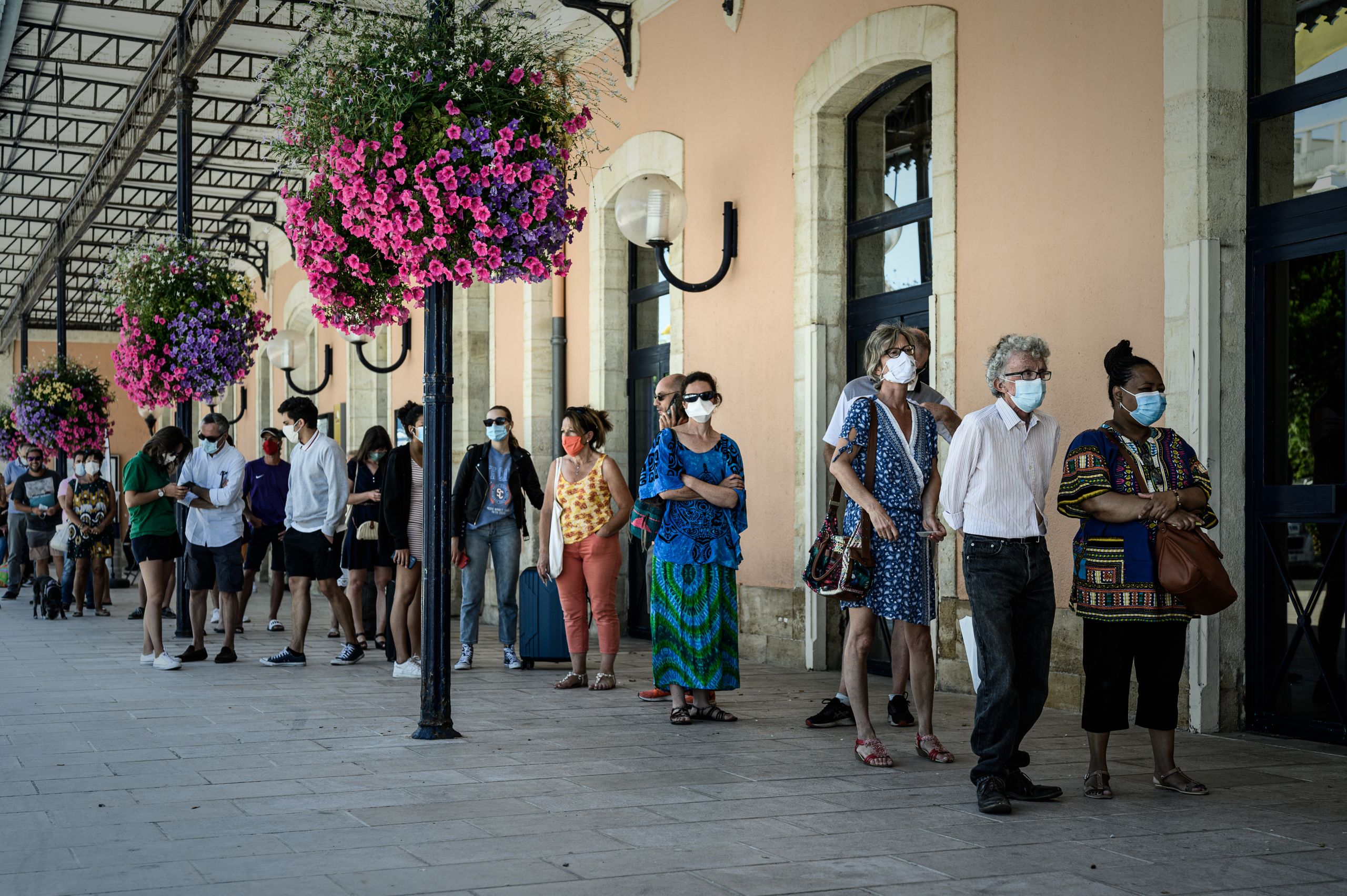
People queue for free COVID-19 testing outside Arcachon railway station in France. /Philippe Lopez/AFP
People queue for free COVID-19 testing outside Arcachon railway station in France. /Philippe Lopez/AFP
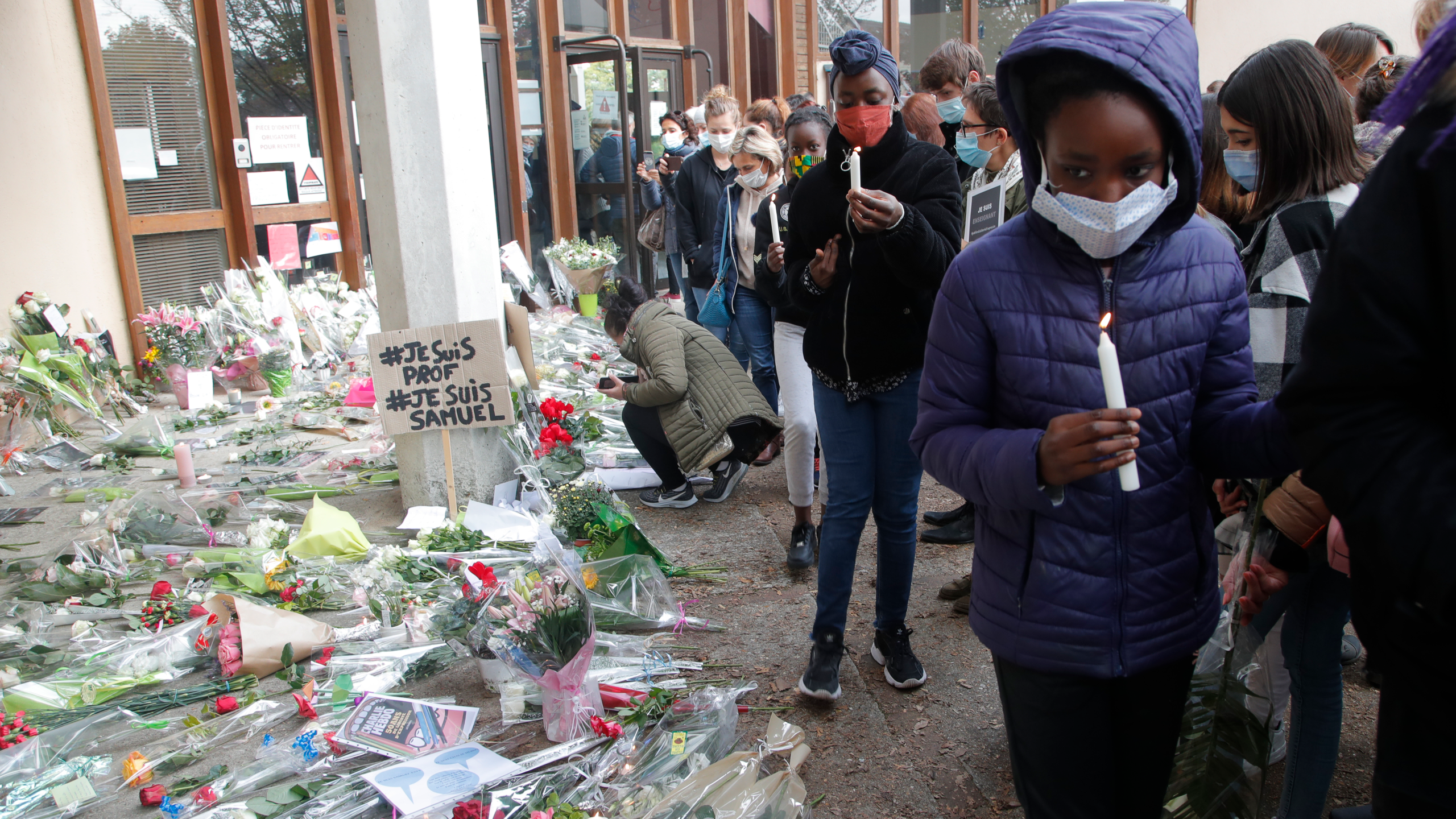
Signs reading 'I am a teacher' and 'I am Samuel' were among flowers laid down as tributes for the teacher. /Michel Euler/AP Photo
Signs reading 'I am a teacher' and 'I am Samuel' were among flowers laid down as tributes for the teacher. /Michel Euler/AP Photo
COVID-19 in France
In January this year, France became the first European nation to confirm a case of the coronavirus. Retrospective testing has shown that it is likely that the then-unknown disease was already in the country from the end of 2019, but back in January, despite concerns in Asia about the spread of the new virus, French life continued uninterrupted, with people free to shop on the Champs-Elysees and socialize at the corner bistros that are common to villages and cities up and down the country. Bars and cinemas were busy, children went to school as normal, and tourists took photos at the Eiffel Tower or crowded into the Louvre Museum for a glimpse of the Mona Lisa. Nobody needed to wear a face mask.
But by March, with the pandemic exploding across the world, French president Emmanuel Macron said a national lockdown would begin – a measure that had never before been seen in peacetime France. New words and phrases became part of the everyday vocabulary, notably the French word for lockdown, confinement, and gestes barrières, the sanitary measures people across the world now know so well: washing your hands, wearing a face mask and keeping your distance from others.
READ MORE May 5: Was there COVID-19 in France last November?
That first lockdown lasted until mid-May, and then the country opened back up, with cafes and bars welcoming customers again. As the summer approached, millions of people crammed onto trains to head off to busy seaside resorts for their traditional August holidays. A second wave of infections arrived, and with it a second national lockdown.
With even Macron himself struck down by a positive test, the government is now trying to chart a path for 2021, which will be a year it hopes where a successful vaccination programme will halt the spread of COVID-19 for good.
Terror attacks in France
November 2020 marked five years since 130 people were killed in the 2015 terror attacks, and to mark the anniversary the prime minister and mayor of Paris visited all the locations in the French capital that were targeted. The attacks began when suicide bombers detonated their explosive devices outside the Stade de France during an international soccer match and culminated in shootings at several bars and cafes in Paris; 80 people were killed in the attack on the Bataclan Theater alone.
There were more terror attacks in France in 2020, which the president said were linked to "radical Islamism." The attack that provoked the most outrage was the beheading of Samuel Paty, a 47-year-old history and geography teacher who was killed outside the school where he taught on October 16. He had recently shown pupils cartoons of the Prophet Mohammed during a class on free speech.
Following the murder, President Macron delivered a lively speech defending freedom of expression, refusing to condemn the cartoons. Three weeks before the decapitation of Paty, two people were stabbed and wounded outside the old offices of Charlie Hebdo, the satirical newspaper which has regularly published cartoons depicting the Islamic prophet.
READ MORE December 10: France plans greater powers against Islamic extremism
And at the end of October, three people were killed in Nice during what Emmanuel Macron called an "Islamist terror attack." All three victims were stabbed during the attack, in a cathedral in the center of the southern French city.
The president has warned of the growing menace of what he describes as "Islamist separatism" and its challenge to the unity of the secular French republic. The issue of Islamist terrorism, which has plagued France almost unabated for five years now, looks set to remain a key issue in the run-up to the 2022 presidential election.
COVID-19 in France
In January this year, France became the first European nation to confirm a case of the coronavirus. Retrospective testing has shown that it is likely that the then-unknown disease was already in the country from the end of 2019, but back in January, despite concerns in Asia about the spread of the new virus, French life continued uninterrupted, with people free to shop on the Champs-Elysees and socialize at the corner bistros that are common to villages and cities up and down the country. Bars and cinemas were busy, children went to school as normal, and tourists took photos at the Eiffel Tower or crowded into the Louvre Museum for a glimpse of the Mona Lisa. Nobody needed to wear a face mask.

People queue for free COVID-19 testing outside Arcachon railway station in France. /Philippe Lopez/AFP
People queue for free COVID-19 testing outside Arcachon railway station in France. /Philippe Lopez/AFP
But by March, with the pandemic exploding across the world, French president Emmanuel Macron said a national lockdown would begin – a measure that had never before been seen in peacetime France. New words and phrases became part of the everyday vocabulary, notably the French word for lockdown, confinement, and gestes barrières, the sanitary measures people across the world now know so well: washing your hands, wearing a face mask and keeping your distance from others.
READ MORE May 5: Was there COVID-19 in France last November?
That first lockdown lasted until mid-May, and then the country opened back up, with cafes and bars welcoming customers again. As the summer approached, millions of people crammed onto trains to head off to busy seaside resorts for their traditional August holidays. A second wave of infections arrived, and with it a second national lockdown.
With even Macron himself struck down by a positive test, the government is now trying to chart a path for 2021, which will be a year it hopes where a successful vaccination programme will halt the spread of COVID-19 for good.
Terror attacks in France
November 2020 marked five years since 130 people were killed in the 2015 terror attacks, and to mark the anniversary the prime minister and mayor of Paris visited all the locations in the French capital that were targeted. The attacks began when suicide bombers detonated their explosive devices outside the Stade de France during an international soccer match and culminated in shootings at several bars and cafes in Paris; 80 people were killed in the attack on the Bataclan Theater alone.
There were more terror attacks in France in 2020, which the president said were linked to "radical Islamism." The attack that provoked the most outrage was the beheading of Samuel Paty, a 47-year-old history and geography teacher who was killed outside the school where he taught on October 16. He had recently shown pupils cartoons of the Prophet Mohammed during a class on free speech.

Signs reading 'I am a teacher' and 'I am Samuel' were among flowers laid down as tributes for the teacher. /Michel Euler/AP Photo
Signs reading 'I am a teacher' and 'I am Samuel' were among flowers laid down as tributes for the teacher. /Michel Euler/AP Photo
Following the murder, President Macron delivered a lively speech defending freedom of expression, refusing to condemn the cartoons. Three weeks before the decapitation of Paty, two people were stabbed and wounded outside the old offices of Charlie Hebdo, the satirical newspaper which has regularly published cartoons depicting the Islamic prophet.
READ MORE December 10: France plans greater powers against Islamic extremism
And at the end of October, three people were killed in Nice during what Emmanuel Macron called an "Islamist terror attack." All three victims were stabbed during the attack, in a cathedral in the center of the southern French city.
The president has warned of the growing menace of what he describes as "Islamist separatism" and its challenge to the unity of the secular French republic. The issue of Islamist terrorism, which has plagued France almost unabated for five years now, looks set to remain a key issue in the run-up to the 2022 presidential election.
Germany:
Ryan Thompson

COVID-19 in Germany
As 2020 comes to a close, Germany has come to a near standstill. Traditional Christmas celebrations have been scrapped as the country struggles to get a handle on its second wave of COVID-19 cases.
Lockdown has been in place here since early November, but authorities had initially opted to try a so-called "lockdown lite," which closed bars and restaurants. The updated rules, announced when Chancellor Angela Merkel met with the 16 state premiers on December 13, have now shuttered non-essential shops, schools and personal care facilities.
The virus is spreading quickest among older, more vulnerable parts of the population. Hospitals say they're struggling to keep beds in intensive care units open, and in some regions capacity has reached critically low levels.
"Our intention has always been to avoid a strain on the health system," Angela Merkel said while announcing the new lockdown measures. "That is why there is an urgent need for action.""
Polling suggests many Germans are supportive of the second lockdown – even a majority of AfD party members, whose platform has opposed such strict measures since the first lockdown in the spring.
READ MORE August 2: Berlin anti-COVID-19 measures protesters chant 'We are free'
However, that's likely because Germany fared better during the first wave of the virus. In comparison with European neighbors, it reported less cases and casualties. Intensive care beds never got close to capacity, and dozens of patients were transported from neighboring countries like France, the Netherlands, and Belgium.
Restrictions were lifted in early May and by June life was largely back to normal – give or take obligatory mask policies. Many were taking holiday and enjoying bars and restaurants that were finally reopened. National morale was high amid a feeling that the country had survived a potentially devastating crisis. Approval ratings for Chancellor Angela Merkel soared past 70 percent.
There is renewed hope in Germany now that the end of the pandemic seems to be in sight. Vaccine rollouts are expected to begin on December 27, in unison with other EU member states.
Much of the life-saving Pfizer/BioNTech vaccine was developed by researchers on German soil, a national feat that the chancellor has celebrated – but not for political gain. In a meeting with the husband-wife duo behind the vaccine's development, Merkel said "We in the German government are extremely proud that we have researchers like you here in our country."
Who replaces Merkel?
Angela Merkel will end her 15-year tenure as chancellor in 2021, ushering in a new era for Germany. Though Merkel will not step down as chancellor until after new elections in the Autumn, the search is already on to find her replacement.
In many ways, it's behind the scenes – a political fight within Merkel's Christian Democrat party. However, some in the party have taken to TV and radio programs to bring the inner-party debate into the public sphere.
One of the biggest shake-ups would be leadership from a Berlin outsider. In recent months, Markus Soeder, Bavaria's state premier, seemed to be an unlikely contender in the race to replace, but some polling puts him in the lead.
Merkel didn't shy away from trying to choose her own successor. She has previously announced that she was throwing her support behind the Defense Minister, Annegret Kramp-Karrenbauer. But after concluding she didn't have sufficient support from her fellow Christian Democrats, Kramp-Karrenbauer pulled herself out of the race in February.
Many young voters in Germany are part of the so-called Generation Merkel and have only known her to be the head of the Government during her three terms totaling 15 years. There's little doubt the next Chancellor will be from Merkel's party, but 2021 will force the Christian Democrats to get serious about narrowing the field even further.
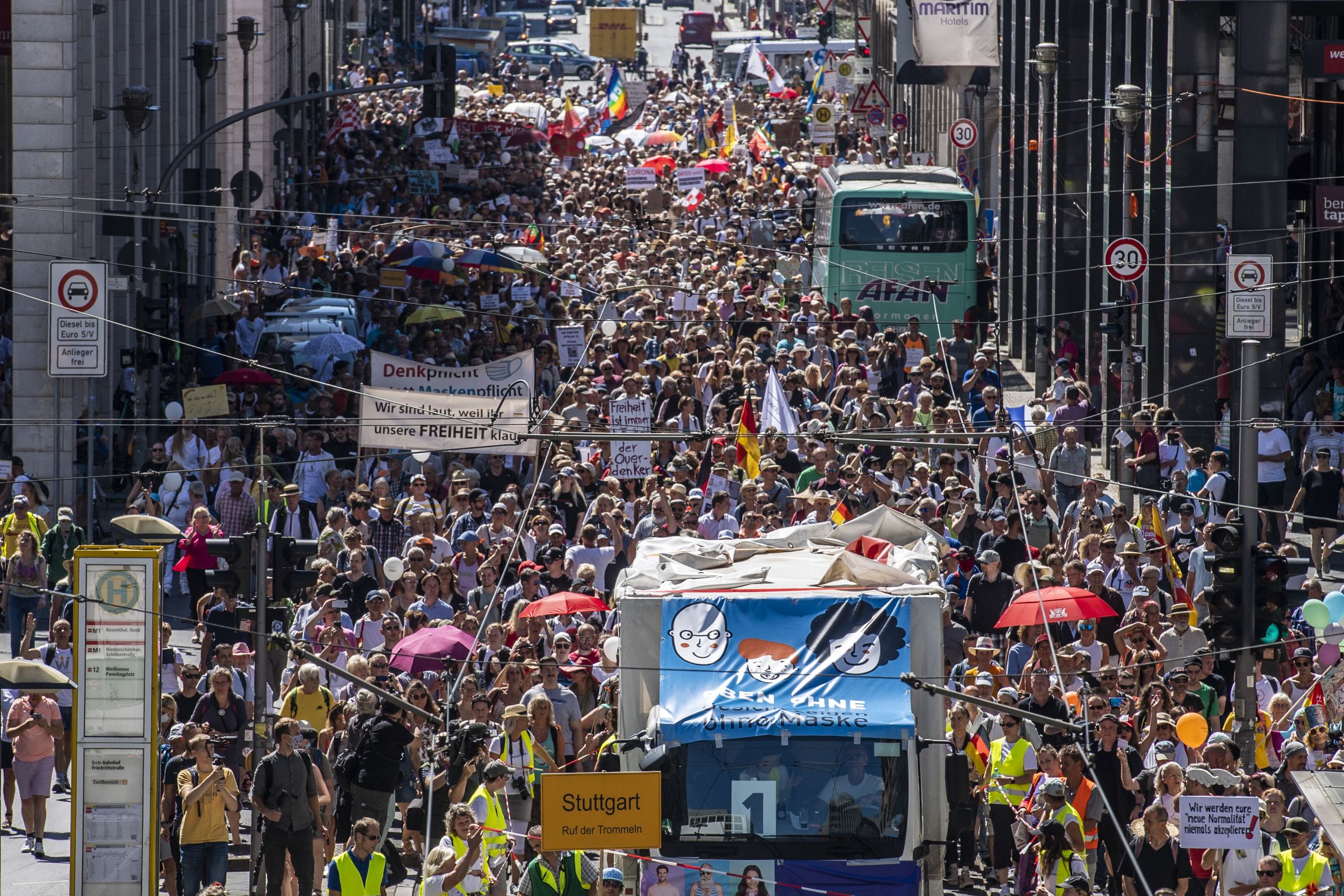
Thousands protest in Berlin against COVID-19 restrictions. /John MacDugall/AFP
Thousands protest in Berlin against COVID-19 restrictions. /John MacDugall/AFP
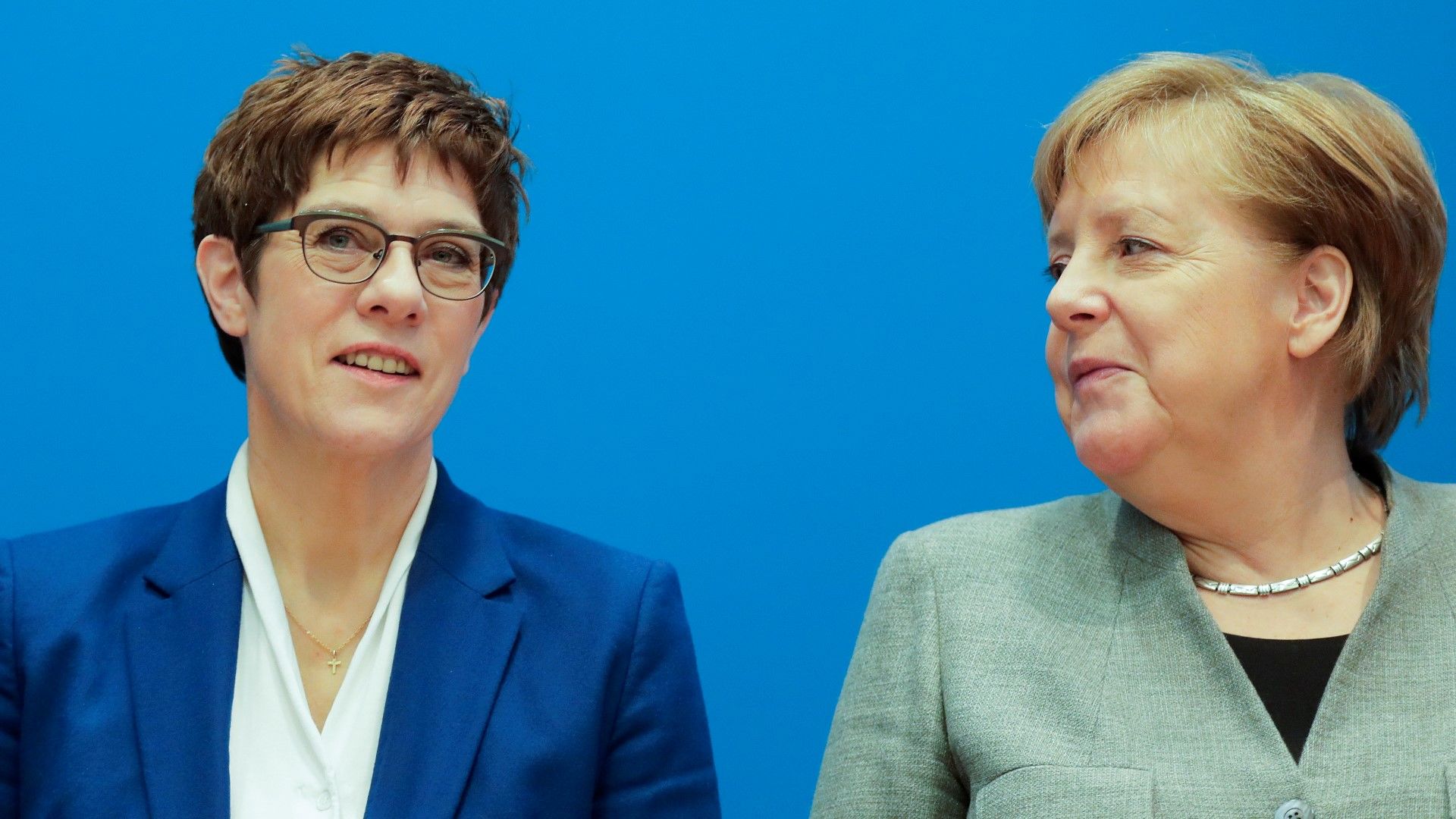
Merkel anointed Annegret Kramp-Karrenbauer, but that didn't work out. /Markus Schreiber/AP
Merkel anointed Annegret Kramp-Karrenbauer, but that didn't work out. /Markus Schreiber/AP
COVID-19 in Germany
As 2020 comes to a close, Germany has come to a near standstill. Traditional Christmas celebrations have been scrapped as the country struggles to get a handle on its second wave of COVID-19 cases.
Lockdown has been in place here since early November, but authorities had initially opted to try a so-called "lockdown lite," which closed bars and restaurants. The updated rules, announced when Chancellor Angela Merkel met with the 16 state premiers on December 13, have now shuttered non-essential shops, schools and personal care facilities.
The virus is spreading quickest among older, more vulnerable parts of the population. Hospitals say they're struggling to keep beds in intensive care units open, and in some regions capacity has reached critically low levels.
"Our intention has always been to avoid a strain on the health system," Angela Merkel said while announcing the new lockdown measures. "That is why there is an urgent need for action."
Polling suggests many Germans are supportive of the second lockdown – even a majority of AfD party members, whose platform has opposed such strict measures since the first lockdown in the spring.

Thousands protested in Berlin against COVID-19 restrictions. /John MacDugall/AFP
Thousands protested in Berlin against COVID-19 restrictions. /John MacDugall/AFP
READ MORE August 2: Berlin anti-COVID-19 measures protesters chant 'We are free'
However, that's likely because Germany fared better during the first wave of the virus. In comparison with European neighbors, it reported less cases and casualties. Intensive care beds never got close to capacity, and dozens of patients were transported from neighboring countries like France, the Netherlands, and Belgium.
Restrictions were lifted in early May and by June life was largely back to normal – give or take obligatory mask policies. Many were taking holiday and enjoying bars and restaurants that were finally reopened. National morale was high amid a feeling that the country had survived a potentially devastating crisis. Approval ratings for Chancellor Angela Merkel soared past 70 percent.
There is renewed hope in Germany now that the end of the pandemic seems to be in sight. Vaccine rollouts are expected to begin on December 27, in unison with other EU member states.
Much of the life-saving Pfizer/BioNTech vaccine was developed by researchers on German soil, a national feat that the chancellor has celebrated – but not for political gain. In a meeting with the husband-wife duo behind the vaccine's development, Merkel said "We in the German government are extremely proud that we have researchers like you here in our country."
Who replaces Merkel?
Angela Merkel will end her 15-year tenure as chancellor in 2021, ushering in a new era for Germany. Though Merkel will not step down as chancellor until after new elections in the Autumn, the search is already on to find her replacement.
In many ways, it's behind the scenes – a political fight within Merkel's Christian Democrat party. However, some in the party have taken to TV and radio programs to bring the inner-party debate into the public sphere.
One of the biggest shake-ups would be leadership from a Berlin outsider. In recent months, Markus Soeder, Bavaria's state premier, seemed to be an unlikely contender in the race to replace, but some polling puts him in the lead.

Merkel anointed Annegret Kramp-Karrenbauer, but that didn't work out. /Markus Schreiber/AP
Merkel anointed Annegret Kramp-Karrenbauer, but that didn't work out. /Markus Schreiber/AP
Merkel didn't shy away from trying to choose her own successor. She has previously announced that she was throwing her support behind the Defense Minister, Annegret Kramp-Karrenbauer. But after concluding she didn't have sufficient support from her fellow Christian Democrats, Kramp-Karrenbauer pulled herself out of the race in February.
Many young voters in Germany are part of the so-called Generation Merkel and have only known her to be the head of the Government during her three terms totaling 15 years. There's little doubt the next Chancellor will be from Merkel's party, but 2021 will force the Christian Democrats to get serious about narrowing the field even further.
Hungary:
Linda Kennedy

COVID-19 in Hungary
The health risk posed by the coronavirus pandemic was a huge concern in Hungary, as in all countries. But here, political reaction created additional unease. The Hungarian government asked the Hungarian parliament for the power to rule by decree during the coronavirus emergency. Other European countries did not approve.
In terms of health, Hungary seemed to do well in the first wave. It's a country with just under 10 million people and, by the end of August, had reported slightly over 6,000 confirmed cases and 615 coronavirus-related deaths.
READ MORE July 7: Hungary introduces 'traffic light' system for new arrivals
The Hungarian government lifted restrictions early and, for much of the summer, restaurants, bars and gyms were open. But September brought a COVID-19 resurgence, with the number of daily new cases increasing rapidly from a few hundred to more than a thousand. Hungary's borders were shut again.
Tourism has contributed 6.5 percent to Hungary's GDP in recent years, according to figures from the European Commission, but the border closures brought international tourism to a standstill. Overall, GDP is projected to drop by 7 percent in 2020.
The EU veto
The other big story has been the veto which Hungary, along with Poland, used to block the EU's $1.35trn budget and $900bn pandemic recovery fund. Hungary's government opposes a new link between EU funds and rule of law.
Politics in Hungary has consequently impacted other European nations by impeding the flow of billions of euros. Yet at home, even as he blocks vital funding from coming to his own country, Prime Minister Viktor Orban retains broad backing and seems set to push on with his program of self-proclaimed illiberal policies next year.
COVID-19 in Hungary
The health risk posed by the coronavirus pandemic was a huge concern in Hungary, as in all countries. But here, political reaction created additional unease. The Hungarian government asked the Hungarian parliament for the power to rule by decree during the coronavirus emergency. Other European countries did not approve.
In terms of health, Hungary seemed to do well in the first wave. It's a country with just under 10 million people and, by the end of August, had reported slightly over 6,000 confirmed cases and 615 coronavirus-related deaths.
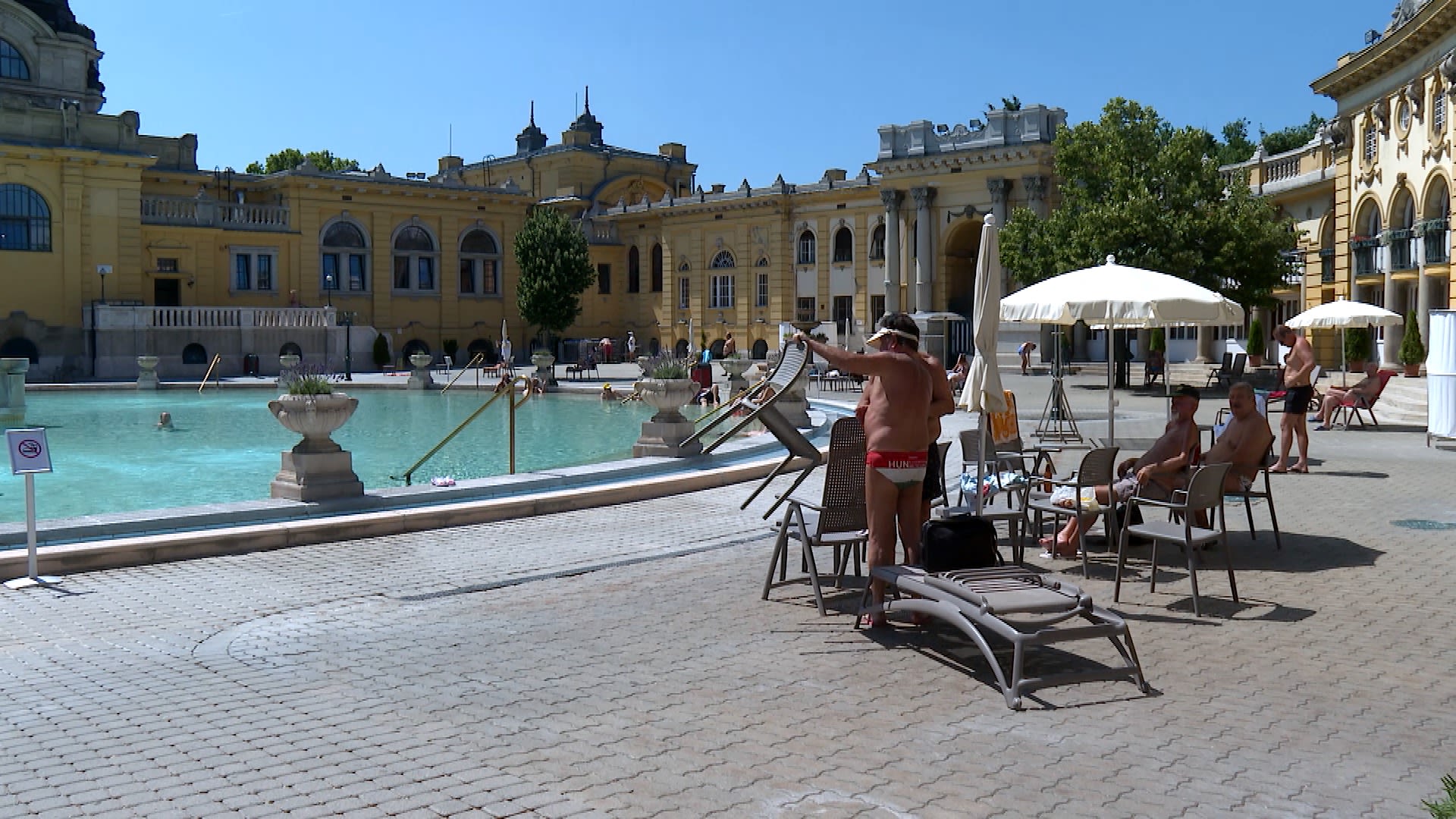
Budapest's famous thermal baths closed for four months but reopened in July. /CGTN
Budapest's famous thermal baths closed for four months but reopened in July. /CGTN
READ MORE July 7: Hungary introduces 'traffic light' system for new arrivals
The Hungarian government lifted restrictions early and, for much of the summer, restaurants, bars and gyms were open. But September brought a COVID-19 resurgence, with the number of daily new cases increasing rapidly from a few hundred to more than a thousand. Hungary's borders were shut again.
Tourism has contributed 6.5 percent to Hungary's GDP in recent years, according to figures from the European Commission, but the border closures brought international tourism to a standstill. Overall, GDP is projected to drop by 7 percent in 2020.
The EU veto
The other big story has been the veto which Hungary, along with Poland, used to block the EU's $1.35trn budget and $900bn pandemic recovery fund. Hungary's government opposes a new link between EU funds and rule of law.
Politics in Hungary has consequently impacted other European nations by impeding the flow of billions of euros. Yet at home, even as he blocks vital funding from coming to his own country, Prime Minister Viktor Orban retains broad backing and seems set to push on with his program of self-proclaimed illiberal policies next year.
Spain:
Rahul Pathak

COVID-19 in Spain
Spain has been one of hardest-hit countries in the world when it comes to the pandemic. It was the first in western Europe to go past a million confirmed COVID-19 cases, back in October.
Now when the pandemic first hit the daily death toll was rising so quickly the Spanish government had to take some drastic action. On March 15 the country went into lockdown, and on March 29 that lockdown was made even more stringent with all non essential workers confined to their homes, Pedro Sanchez's government calling it "the hibernation of the economy."
Now that economy has also really suffered because of the pandemic. Back in October the International Monetary Fund predicted that Spain's economy would shrink by 12.8 percent in 2020 – the biggest contraction of all the world's advanced economies.
Poverty in Spain
Even the year's biggest non-coronavirus story was impacted by COVID-19. That story would have to be poverty in Spain.
Back in February Philip Alston, then the United Nations' special rapporteur on extreme poverty and human rights, came to Spain on a 12-day visit – and his assessment was damning. "Spain is utterly failing people in poverty" is what the Australian said – very strong words for a diplomat.
He said the country had pretty much recovered from the 2008 financial crisis and yet the policy of austerity still persisted in certain areas. Alston hoped that the socialist coalition government of Pedro Sanchez would take steps to address this.
In the last few weeks, Spain's parliament did manage to approve its first full-year budget in nearly three years.
It includes record spending on health and social care – and ironically the government probably wouldn't have got the support it needed to get it through parliament had it not been for the coronavirus crisis.
COVID-19 in Spain
Spain has been one of hardest-hit countries in the world when it comes to the pandemic. It was the first in western Europe to go past a million confirmed COVID-19 cases, back in October.
Now when the pandemic first hit the daily death toll was rising so quickly the Spanish government had to take some drastic action. On March 15 the country went into lockdown, and on March 29 that lockdown was made even more stringent with all non essential workers confined to their homes, Pedro Sanchez's government calling it "the hibernation of the economy."
Now that economy has also really suffered because of the pandemic. Back in October the International Monetary Fund predicted that Spain's economy would shrink by 12.8 percent in 2020 – the biggest contraction of all the world's advanced economies.
Poverty in Spain
Even the year's biggest non-coronavirus story was impacted by COVID-19. That story would have to be poverty in Spain.
Back in February Philip Alston, then the United Nations' special rapporteur on extreme poverty and human rights, came to Spain on a 12-day visit – and his assessment was damning. "Spain is utterly failing people in poverty" is what the Australian said – very strong words for a diplomat.
He said the country had pretty much recovered from the 2008 financial crisis and yet the policy of austerity still persisted in certain areas. Alston hoped that the socialist coalition government of Pedro Sanchez would take steps to address this.
In the last few weeks, Spain's parliament did manage to approve its first full-year budget in nearly three years.
It includes record spending on health and social care – and ironically the government probably wouldn't have got the support it needed to get it through parliament had it not been for the coronavirus crisis.
UK:
Nawied Jabarkhyl

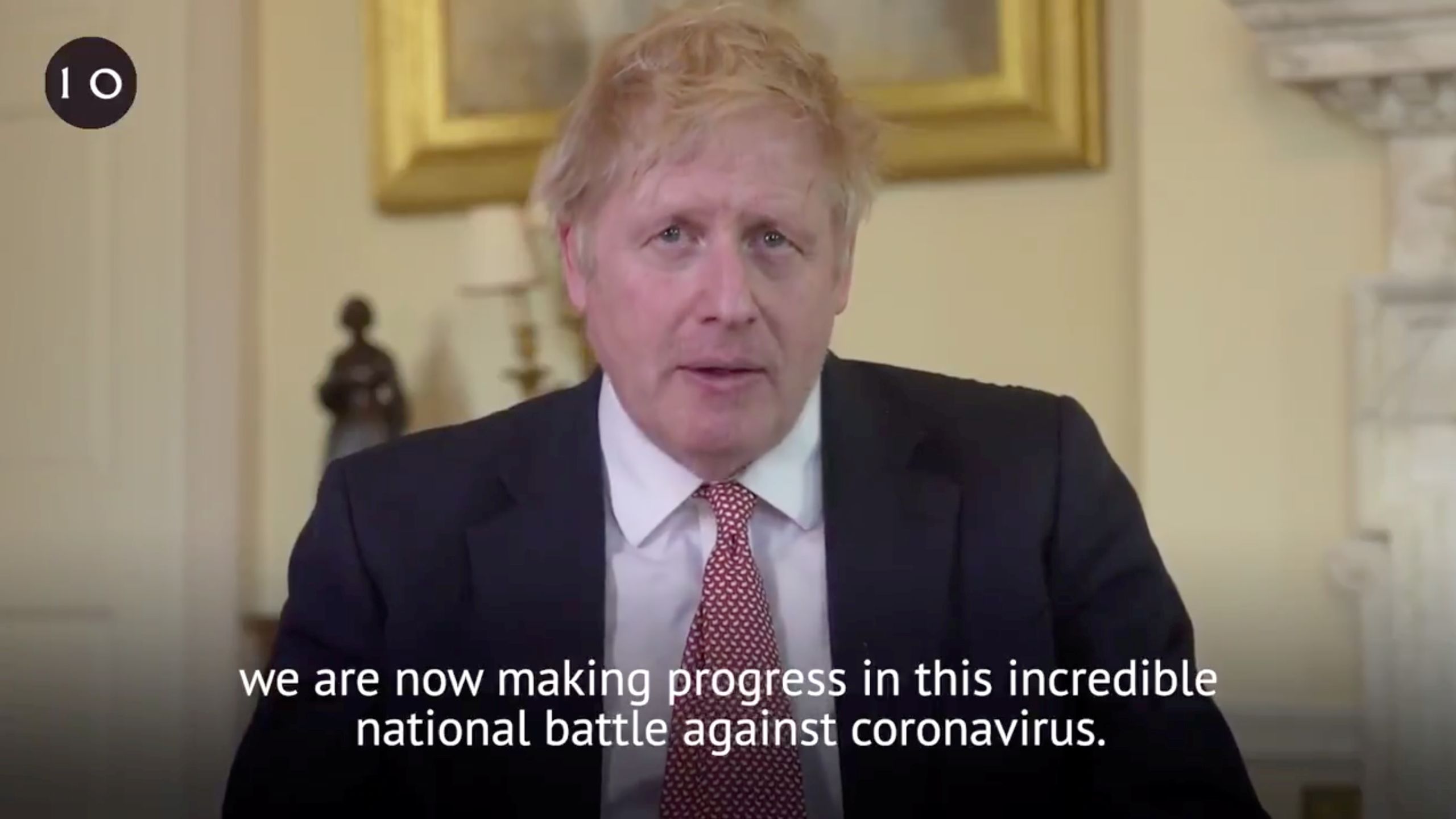
After contracting COVID-19, Boris Johnson said the country's National Health Service "saved my life, no question."
After contracting COVID-19, Boris Johnson said the country's National Health Service "saved my life, no question."
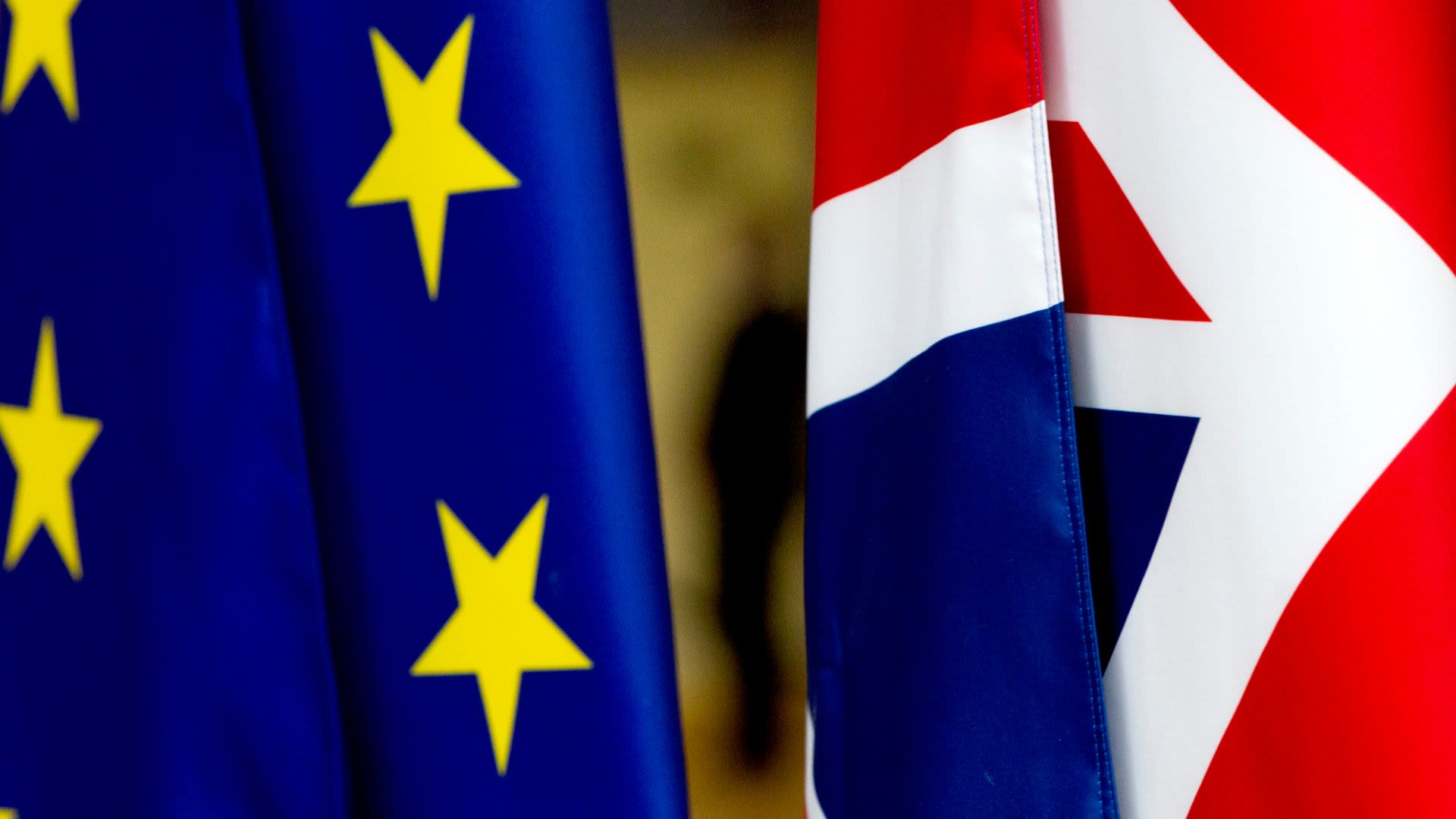
Even amid COVID-19, UK politics were still dominated once again by Brexit. /Virginia Mayo/AP Photo
Even amid COVID-19, UK politics were still dominated once again by Brexit. /Virginia Mayo/AP Photo
COVID-19 in the UK
The year 2020 has been challenging for most countries in the world, but few have been as hard-hit by COVID-19 as the UK. With more than 65,000 deaths officially recorded, the country has lost more people to the disease than only a handful of nations. And it's been economically damaging too. The IMF predicts the UK economy will be 9.8 percent smaller at the end of this year, faring worse than any other major economy.
A lot of attention has focused on the government's response. Boris Johnson's administration has faced severe criticism over its handling of the pandemic from the early stages. In February and March – while coronavirus swept across the world – Britain kept its borders open and resisted calls for a national lockdown. Officials then imposed one on March 23. It lasted until June.
That alleged lack of preparation meant the UK saw a severe first wave of the virus, overtaking other European countries like Spain and Italy in terms of deaths, even though the latter two were hit harder initially.
READ MORE August 3: UK faces COVID-19 dilemma after spike in cases
Critics pointed towards a serious shortage of personal protective equipment like masks and gloves and even things like ventilators as a sign of the government's mishandling. Whitehall's attempts at procuring the limited supplies are still being questioned eight months later.
The government insists it has done all it can throughout to protect the National Health Service and to save each and every life. But its task was made harder by the loss of its figurehead for several weeks during the height of the pandemic.
Johnson, who swept his Conservative party to election victory in December 2019, contracted the virus and was hospitalized in April, becoming one of the first world leaders to be impacted personally.
He spent days in intensive care and later said the doctors and nurses "saved my life, no question."
Despite concerns over its containment of the virus, the UK was an early backer of a vaccine for COVID-19. It hosted the Global Vaccine Summit in June and has invested tens of millions of dollars in finding a jab. And its efforts were rewarded when it became the first country to approve and roll out the Pfizer/BioNTech vaccination. It's also ordered millions of doses of the Oxford/AstraZeneca and Moderna vaccines.
As the year progressed, the economic damage caused by coronavirus became all too clear for the UK. By December, official figures showed 819,000 fewer people were on British payrolls than before the pandemic. In April alone, GDP – or economic output – fell by more than 20 percent.
As the economy opened up in the summer, businesses recovered some losses thanks to schemes that encouraged people to eat out and spend money at retailers. But a second wave saw the UK plunged back into a month-long national lockdown in November, forcing most shops and restaurants to shut again.
Brexit
Away from the pandemic, 2020 actually started off with great optimism for the UK. On January 31, it left the European Union after 47 years of membership.
Empowered with a large majority in parliament, Boris Johnson sought to reshape a "Global Britain" by forging new trade deals for the country outside the "shackles" of the EU. But those hopes were quickly dampened by COVID. Instead, the most important trade deal it needed to strike still hung in the balance by mid-December.
Just over half of Britain's imports came from the EU in 2019 and 43 percent of its exports went to the bloc. With or without a deal, businesses on both sides are bracing themselves for a potential fallout.
Looking back on the year, perhaps it's appropriate for the final word to go to the British prime minister, for whom this year has brought such highs and lows (his baby son was born in April – the sixth he's known to have fathered).
When commenting on vaccine developments recently, he summed up a nation's mood: "2020 has been just awful," he said. "2021 is going to be better."
COVID-19 in the UK
The year 2020 has been challenging for most countries in the world, but few have been as hard-hit by COVID-19 as the UK. With more than 65,000 deaths officially recorded, the country has lost more people to the disease than only a handful of nations. And it’s been economically damaging too. The IMF predicts the UK economy will be 9.8 percent smaller at the end of this year, faring worse than any other major economy.
A lot of attention has focused on the government's response. Boris Johnson's administration has faced severe criticism over its handling of the pandemic from the early stages. In February and March – while coronavirus swept across the world – Britain kept its borders open and resisted calls for a national lockdown. Officials then imposed one on March 23. It lasted until June.
That alleged lack of preparation meant the UK saw a severe first wave of the virus, overtaking other European countries like Spain and Italy in terms of deaths, even though the latter two were hit harder initially.
READ MORE August 3: UK faces COVID-19 dilemma after spike in cases
Critics pointed towards a serious shortage of personal protective equipment like masks and gloves and even things like ventilators as a sign of the government's mishandling. Whitehall's attempts at procuring the limited supplies are still being questioned eight months later.
The government insists it has done all it can throughout to protect the National Health Service and to save each and every life. But its task was made harder by the loss of its figurehead for several weeks during the height of the pandemic.
Johnson, who swept his Conservative party to election victory in December 2019, contracted the virus and was hospitalized in April, becoming one of the first world leaders to be impacted personally.
He spent days in intensive care and later said the doctors and nurses "saved my life, no question."

After contracting COVID-19, Boris Johnson said the country's National Health Service "saved my life, no question."
After contracting COVID-19, Boris Johnson said the country's National Health Service "saved my life, no question."
Despite concerns over its containment of the virus, the UK was an early backer of a vaccine for COVID-19. It hosted the Global Vaccine Summit in June and has invested tens of millions of dollars in finding a jab. And its efforts were rewarded when it became the first country to approve and roll out the Pfizer/BioNTech vaccination. It's also ordered millions of doses of the Oxford/AstraZeneca and Moderna vaccines.
As the year progressed, the economic damage caused by coronavirus became all too clear for the UK. By December, official figures showed 819,000 fewer people were on British payrolls than before the pandemic. In April alone, GDP – or economic output – fell by more than 20 percent.
As the economy opened up in the summer, businesses recovered some losses thanks to schemes that encouraged people to eat out and spend money at retailers. But a second wave saw the UK plunged back into a month-long national lockdown in November, forcing most shops and restaurants to shut again.
Brexit
Away from the pandemic, 2020 actually started off with great optimism for the UK. On January 31, it left the European Union after 47 years of membership.
Empowered with a large majority in parliament, Boris Johnson sought to reshape a "Global Britain" by forging new trade deals for the country outside the "shackles" of the EU. But those hopes were quickly dampened by COVID. Instead, the most important trade deal it needed to strike still hung in the balance by mid-December.
Just over half of Britain's imports came from the EU in 2019 and 43 percent of its exports went to the bloc. With or without a deal, businesses on both sides are bracing themselves for a potential fallout.
Looking back on the year, perhaps it's appropriate for the final word to go to the British prime minister, for whom this year has brought such highs and lows (his baby son was born in April – the sixth he's known to have fathered).
When commenting on vaccine developments recently, he summed up a nation's mood: "2020 has been just awful," he said. "2021 is going to be better."